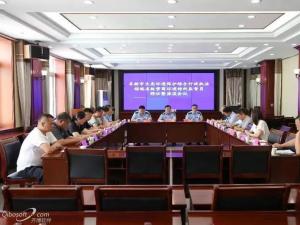Manuel PENNAFORTE (潘富石):法国预防科技灾害的法律措施∗(六)
|
rs of installations at the origin of the risk and the communes or groups of communes. Inevitably the question arises on the amount each “financer” should pay respectively by virtue of the conventions. The legislator has fixed rules which provide for different shares of costs according to the total amount of the measures inferred by the exercise of the right of relinquishment or the expropriation process (the share varies based on whether the total amount is less than or more than thirty million Euros). Rules for the financing concerning measures relative to the protection of existing constructions do not exist (a change in the law on this point is, however, underway). The proprietors concerned are nevertheless not neglected by the legislator who has given them the possibility of income tax relief representing 30% of the amount spent on the necessary protection works. 2.2.2.3 Procedure for the Creation, Regulation and Approval of the PPRT The implementation of a PPRT includes three successive stages which involve those directly concerned by the project (at the minimum: competent municipalities or groups of municipalities, operators at the origin of the risk and local committee of information and consultation) and depends on a very wide “consultation”, including not only those associated, but also the public in general. First step: “Technical study stage” This stage, which aims to represent the risks to which the concerned territory is exposed includes notably the analysis and the mapping of the technological risks from installations listed under section “S”: 667 2012 年全国环境资源法学研讨会(年会)论文集 The levels of risk Enveloping circle – slow kinetics Map superimposing the risks and showing possible consequences Second step: “PPRT strategy phase” This stage establishes the principles of the future PPRT through use of the specific tools, on the regulation principles and on the reference elements (for example, Guide for the use of local councillors), drawn up by the Ministry of Environment departments. It aims at: - identifying the urban development control actions which need to be carried out in the most exposed zones of the area under study; at this time the choices available (right to urban pre-emption, relinquishment, expropriation, protection of the existing constructions) are specified according to the local context; - discussing with the associated stakeholders in order to establish the PPRT arrangements taking into account the specificities of the area. The strategy phase of the PPRT enables urban planning and construction rules to be considered with regard to property customs and tools (DPU, relinquishment, expropriation), distinguishing zone and sector types according to the level of risk. An analysis sheet is available in the methodological guides distributed by the Ministry of Environment. Third step: “PPRT preparation stage” The purpose of this step is to translate the conclusions which result from the preceding ones in a statutory form. For this purpose competent public authorities make up a file which includes, notably: - a presentation note describing the installations or storage areas at the origin of risk, their nature and intensity and setting forth the reasons which lead to the definition of the area exposed to risk; - diagrams showing the “area exposed to risk”, the DPU zone and the relinquishment or expropriation sectors selected; for this purpose a “plan of prescribed zones” is established, presented as follows: Exemple de projet de zonage réglementaireExemple réglementaire 668 可持续发展·环境保护·防灾减灾 Example of a project of prescribed zones: - a regulation project including, for each zone or sector: measures forbidding and regulations restraining construction, utilisation or operation; the above-mentioned “compulsory” SUP (among others); the setting up of the right of relinquishment, the right of pre-emption or the possibility to launch an expropriation procedure; the measures for the protection of the existing constructions as well as the schedule of the implementation of the measures provided for by the PPRT; - the recommendations aimed at strengthening the protection of the populations; - the estimation of the cost of the measure likely to be taken in the event of relinquishment or expropriation; - the order of priority decided upon for the implementation of the measures provided for by the PPRT. The file is then submitted to a public enquiry. In order to complete the information from the public, the documents drawn up following the “consultation” (“eva luation of the consultation”), in particular are put as appendices to the file. The enquiry lasts a month and can, if necessary, be extended for one more month. After the public enquiry, the PPRT (modified, if required) is approved by a prefectoral order. For this, the Préfet has a period of three months from the time of the reception of the ‘commisaire-enquêteur’s’ or the board of enquiry’s report. The PPRT is revised following a procedure identical to that which led to its approval. ---oooOOOooo--- In the light of the account above, it appears that France has a strong set of rules and regulations to reduce the probability of the occurrence of technological catastrophes. The operators of installations likely to produce major accidents are under tight restrictions. Among these is the obligation to put an efficient system of safety management in place. If these obligations are not respected, the interested parties run the risk of administrative sanctions, such as the suspension of the operation of the installations concerned. They also run the risk o |
我来说两句
已有0评论 点击全部查看






